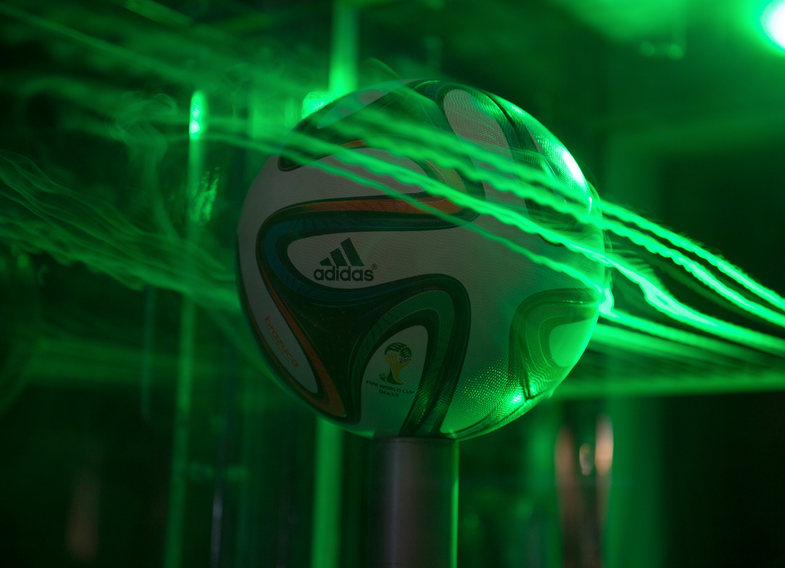The Aerodynamics Of The World Cup Soccer Ball, In GIFs
Some demos from NASA's Ames Research Center

NASA stuck a World Cup soccer ball into some of its aerodynamics testing chambers because why not. NASA is not involved in developing or testing the ball, so these demonstrations were really just for fun.
The demos put some cool visuals to what Popular Science previously reported about this year’s ball, which was made by Adidas and named the Brazuca. The Brazuca is a very smooth ball with its stitching hidden deep inside. That means that when it’s kicked, it keeps the airflow close to its surface, ensuring that the ball moves in a true, predictable arc:

However, at certain speeds, the airflow around every soccer ball becomes more erratic and unpredictable. If a player kicks a ball at just that speed, with little or no spin, the ball’s arc becomes unpredictable. This phenomenon is called knuckling. During the last World Cup in 2010, players complained that that year’s ball handled strangely. It turned out that that the 2010 ball, named Jabulani, knuckled when kicked at about 50 mph—a typical kicking speed for World Cup players.
Brazuca’s design ensures that the ball knuckles not at 50 mph, but about 30 mph. Typical, polygon-tiled soccer balls also knuckle around 30 mph.
Of course, spinning the ball changes its aerodynamics. Here’s NASA’s demonstration with a typical soccer ball in a water-filled chamber (The green lines are created with dye):
